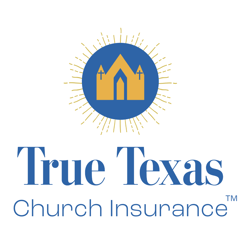Even though hail season has been quiet this fall, Arnold knew that it will not last forever. Death, Taxes, and Hail Storms are inevitable no matter what part of Texas you call home whether it is spring or fall. As his church was reviewing their finances as part of the end of year process, the finance committee was looking at both the liability coverage and property coverage to make sure that they did not have obvious gaps in coverage. Arnold was keenly aware that more insurance policies for church property were being put in place with Actual Cash Value. This was leaving more churches with a potential risk of a hail insurance claim going poorly.
Some of the church leaders begin to ask Arnold questions about their insurance policy wanting to make sure that they had Replacement Cost rather than Actual Cash Value. He knew that understanding this difference is essential to ensuring that your church can recover properly after a loss. Even if it came with additional costs.
This Matters For Church Buildings
The terms “Replacement Cost” and “Actual Cash Value” are used frequently, but not everyone has an understanding of how this affects their church property insurance. If Arnold's church has to file a claim after an event like fire, hail damage, or theft, the insurance company must decide how much to pay to repair or replace your damaged property. The church insurance policy will dictate how this is done rather than leaving it up to chance.
Arnold knew that the insurance carrier would review the property damage that occurred along with the terms and conditions of the policy in place. The adjuster would then set the claim payout based on those terms and conditions. Arnold knew that the two methods on their policy uses can have a huge financial impact on the church’s ability to find financial recovery after the claim was paid.
Actual Cash Value Leaves You Short
If your policy settles claims based on an Actual Cash Value basis, the insurance company will factor in depreciation from the amount due to be paid to cover the damages. For example, if your church roof is 15 years old, its value has significantly decreased because of the effect of the sun on those shingles. So, in the event of a total loss, the insurance company would subtract that depreciation from the cost of a new roof, leaving Arnold's church with a much smaller payout.
This method may provide your church cost savings on the annual premium, but it could leave you with unexpected expenses when repairs are needed from a storm. Since the settlement might only cover a fraction of what it would cost to rebuild or replace the damaged property many Texas churches find the additional premium for additional coverage to be worth it.

Replacement Cost Offers Full Recovery
On the other hand, Arnold knows that a Replacement Cost policy ensures that his church receives enough money to replace damaged property with new items of similar quality. Arnold's fellow finance committee members were focused on their church roof which is only twelve years old. They understood that a Replacement Cost policy would cost them that additional premium. But they also knew that it would be a daunting task for the church to cover the cost of replacing it with a new roof. They wanted to shift this burden to the insurance carrier by making sure that they had adequate insurance coverage for the roof and other church and ministry buildings. They saw this as good stewardship of the church funds.
Why Would Churches Choose Actual Cash Value?
Though we generally recommend Replacement Cost coverage, some churches do opt for Actual Cash Value. As the cost of insurance for churches has skyrocketed and the number of affordable church insurance options has continued to dwindle, some churches have opted to take on additional risk to preserve their budgets by taking on minimum coverage. Along with this, churches with older structures that may not be in pristine shape or are simply much too large for a congregation may not see the cost/benefit of taking on replacement coverage. We do work with churches on this basis to find the coverage that meets their needs. Their reasons can go beyond these core three, but this fits a lot of churches.
- Age and Condition of the Property: If the church is older or requires significant repairs, some insurers may only offer Actual Cash Value coverage. Additionally, for churches with large buildings and a dwindling congregation may not want to build back to the size they have now.
- Construction Methods: If your church has older, outdated building materials, like plaster walls or aluminum wiring, the cost of full replacement may be high. ACV might provide enough protection at a lower premium.
- Budget Considerations: Actual Cash Value policies tend to be more affordable. If the church has tight finances and can’t justify the higher premiums, ACV may provide basic protection, while allowing the church to save on premiums.

What’s Best for Your Church?
For many churches, Replacement Cost offers more robust protection. However, smaller congregations or older buildings might find that Actual Cash Value meets their needs while helping manage premium costs. The right choice depends on your church’s condition, budget, and long-term goals. Working with an experienced independent insurance agent who can help you find a customized solution will allow you to find the right types of coverage for your church. Just like Arnold did when he reached out to our agents.
Work with an Experienced Church Insurance Specialist
Making the right decision between Replacement Cost and Actual Cash Value can be complex. That’s why it’s important to work with an church insurance specialist who understands the unique needs of Texas churches. At Insurance For Texans, we specialize in helping churches find tailored insurance solutions through our True Texas Church Insurance program. Our goal is to protect your people, buildings, and ministry.
Click the button below to get in touch with a church insurance expert today and ensure your church is properly protected, whether you choose Replacement Cost or Actual Cash Value coverage.


